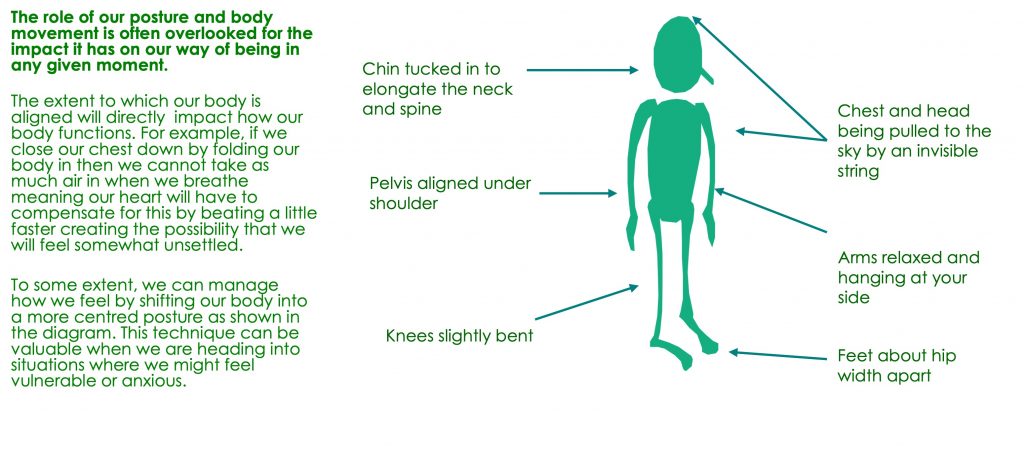
Much has been written over the years about body language and how we can ‘read’ it. Although we are generally not aware of it, we place great significance on others’ physical appearance, behaviour and movement. It is what we first notice about others when we meet them and we make our initial assessments of them based on what we observe.
Our posture is how we sit and stand. As a result of a lifetime of experiences, we habitually end up in certain postures. Amongst the animals, we are unusual in that we always walk on two legs. This upright posture makes us vulnerable. For animals walking on four legs, its vulnerability is near the ground, protected by the hard back and limbs. For humans, our belly contains vital organs is permanently exposed. When we feel threatened we defend ourselves by protecting our exposed front. This affects our uprightness leading momentarily to a more closed posture.
If we see the world as largely a threatening place then we are predisposed to protecting ourselves and this results in our upright posture being more permanently changed to a closed posture. These postural changes can also come from regular positioning such as sitting at a desk and using a computer or from physical trauma such as a car accident.
Our height and posture impacts on how we observe the world. Think of how tall you are and what this means in certain situations. If you are in a crowd of people who are taller than you then you do not see very much. Your view of the world is constrained. If you tend to walk looking at the ground this will impact on how you engage with the world.
A closed posture also impacts on your internal body movement. Such a posture limits the amount of air our lungs can hold, meaning our hearts have to work harder to get oxygen around our body and putting stress on our metabolism. This all results in our interoceptive network providing feedback that we often interpret as emotions such as fear and anxiety.
We can develop a more aligned, balanced and centred posture practising these steps outlined by Alan Sieler in his program for the Diploma of Ontological Coaching:
| Body Part | Alignment Position and Action |
| Feet | (Ideally done without shoes) Stand with feet hip width apart with about two thirds of your weight distributed on the outside and two front pads of the feet. Spread your toes as widely as you can and grip the surface you are on with your toes, so that you feel solidly grounded. |
| Knees | Your knees are slightly bent with a feeling of flexibility and being relaxed. |
| Pelvis | Your pelvis is aligned under your shoulders and not pushed back or forward. This may take some getting used if you have developed a deeply ingrained way of holding your hips too far back or forward. |
| Lower Belly | Your lower belly is relaxed without hanging loose (not flaccid) and it is able to move easily with inhalation and exhalation. |
| Chest | Imagine there is a string attached to the top of your sternum and connected to a pulley in the sky. It is gently and firmly pull upwards. This should open your chest and free up your breathing. |
| Arms and Fingers | Your arms are relaxed and hanging down with your fingers pointing down. |
| Head | As with the chest imagine that there is a solid piece of string firmly and gently lifting the crown of your head. Your chin is tucked in, and your neck and spine are elongated. |
| Face | Close your lips and separate your teeth to relax your jaw. Place the tip of your tongue in contact with the roof of your mouth. Relax the muscles around your eyes and mouth and also between your eyebrows. |
Centring your body is one of the most effective ways to quickly shift our mood and also provides a means of making more powerful requests, offers and declarations.
Another aspect of our physical being that we notice is the speed with which we move. How fast we walk, talk and so on leads us to various interpretations of another’s way of being.
It is always important to remember that our interpretations of someone’s way of being based on their physical being is just that – an interpretation. To ground those interpretations requires conversations and further inquiry. Just because someone crosses their arms, it does not mean they are being defensive – they just might be cold.
